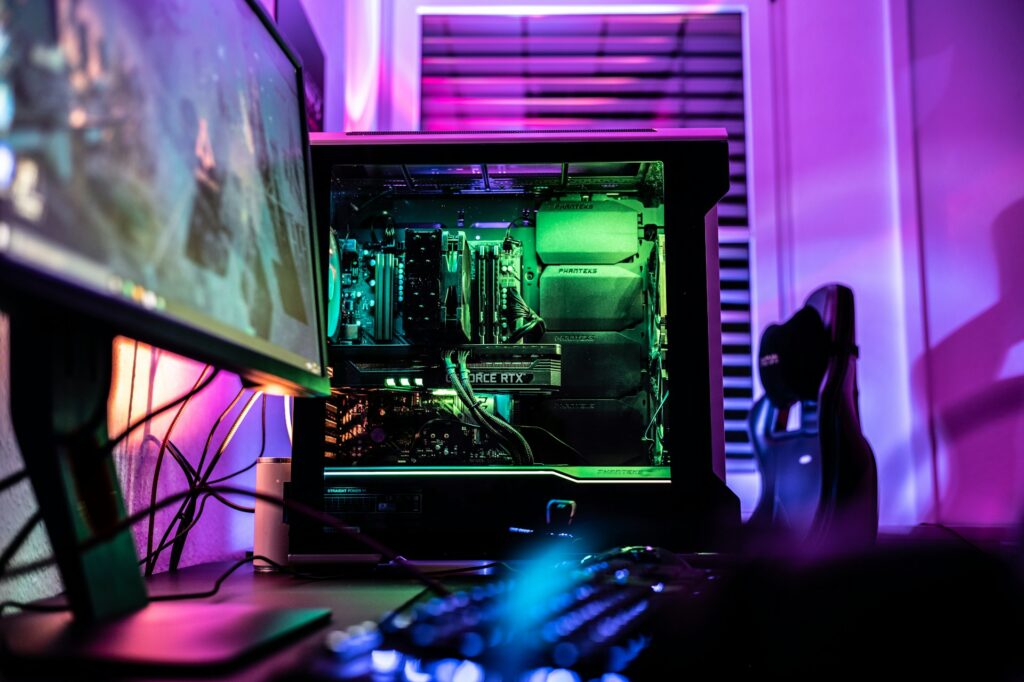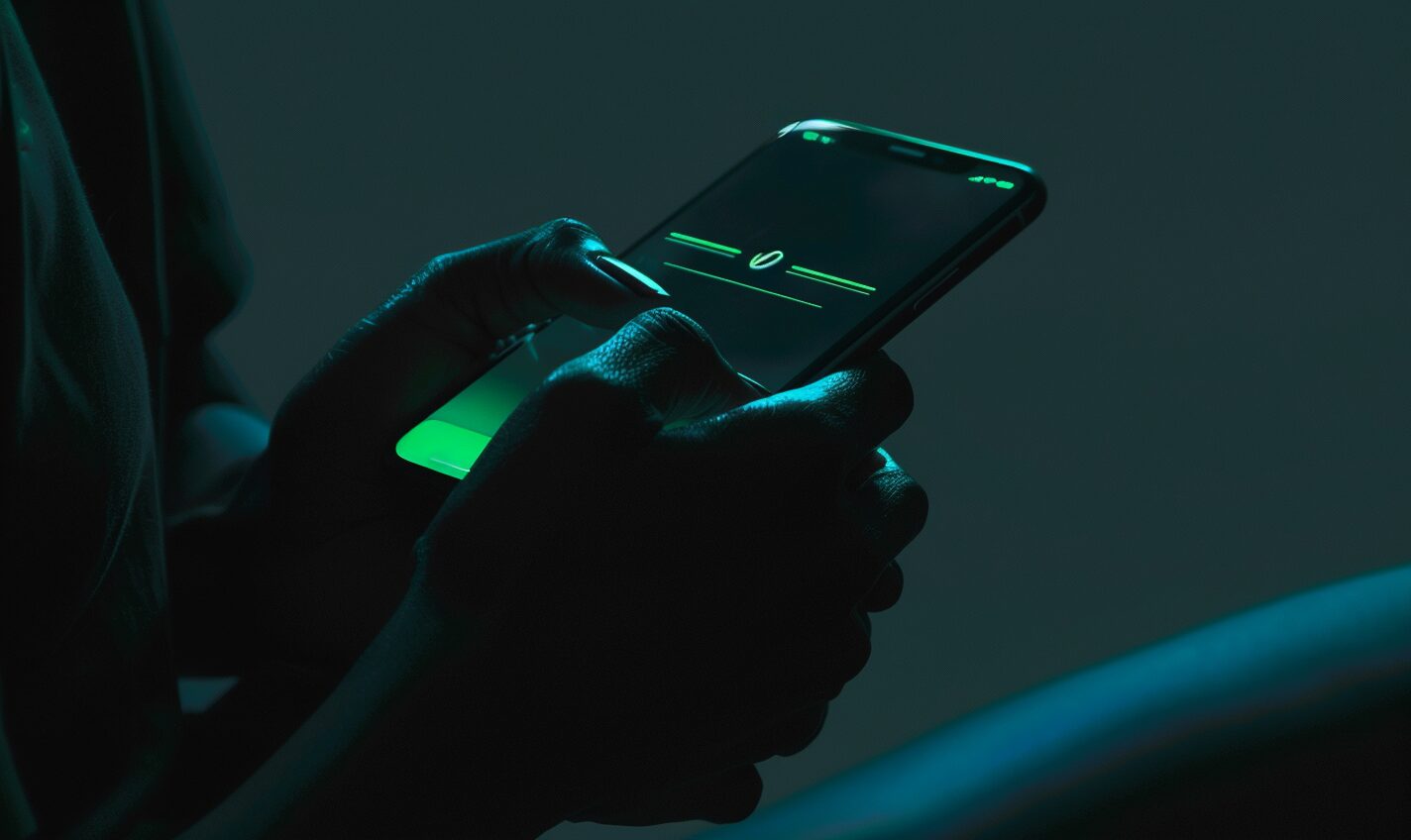What causes an iPhone to stay silent even when it has an incoming call? There are actually a few things that can be behind this common iPhone issue. Luckily, fixing ringer problems is usually quick and easy. This process will go through each of the most common causes of an iPhone not ringing until a solution you can find a solution. You won’t need any extra equipment or apps, either, just the iPhone in need of attention. Following the steps below should help identify and resolve the issue and get the iPhone’s ringer working normally again in just a few minutes.
1. Check the Silent Button
The most common cause of an iPhone not ringing is the silent button. This is the little switch on the left side of the iPhone, usually right above the volume buttons. It’s easy to accidentally flip the switch without noticing and put the phone in silent mode. When looking at the silent switch, if there is a little red stripe visible right above it, then the phone is silenced.
Simply slide the switch up to cover the red stripe and the iPhone will vibrate a little bit. A window should appear on the iPhone’s screen, as well, showing the current ringer volume. This indicates that you’ve successfully switched the iPhone out of silent mode. If a test call still fails to make the iPhone ring, however, something else is behind the silent ringer.
2. Adjust Ringer Volume
Keep a close eye on the ringer volume window that appears when switching the iPhone out of silent mode. It may reveal another possible cause for the ringer tone’s absence. Many people aren’t aware that the volume buttons on the side of an iPhone can change the volume of the ringer. So, when someone adjusts the volume to watch a video, for example, they could also be adjusting the volume of their ringer tone without realizing it.
There is a way to turn off this feature and check the ringer volume at the same time. Simply open the Settings app and scroll down to “Sounds & Haptics”. All of the iPhone’s ringer settings should appear, including a volume bar for the ringer. Adjust it as much as needed first. Then, right below the volume slider, look for a switch called “Change with Buttons”. Make sure to turn this off. This will keep the ringer volume from changing when the volume buttons are pressed.
Check Airplane Mode
In addition to the volume buttons, there are a couple other settings that can silence an iPhone’s ringer. Start by returning to the main page of the Settings app. One of the first settings on the list should be “Airplane Mode”. It is completely normal for people to accidentally switch on airplane mode without noticing, which will turn off all kinds of features, including Wi-Fi and cellular reception. Make sure that you only turn on Airplane Mode when on board an airplane, since it can be a common cause of missed calls and texts.
Check Do Not Disturb Mode
The next setting to take a look at is “Do Not Disturb”. Just like Airplane Mode, people often turn on this setting without realizing it or forget to turn it off. Make sure that Do Not Disturb is switched off since it will silence most incoming calls. It is possible to allow certain contacts to trigger the iPhone’s ringer even in Do Not Disturb mode, however. This is a useful feature for people who often use Do Not Disturb mode for things like sleeping at night, attending meetings, or going to places like movie theaters. Adjusting the “Allow Calls From” setting within the Do Not Disturb settings will make sure that calls from certain people, like family members or important colleagues, always get through, even when you’ve turned Do Not Disturb on.
3. Check for Connected Bluetooth Devices
iPhones work great with Bluetooth devices, sometimes too great. iPhones can automatically connect to some Bluetooth devices as soon as they turn on, including audio devices, such as headphones and speakers, and even cars. It is not uncommon for someone to get out of their car and not realize that their iPhone is still connected to the car’s speakers. The iPhone is ringing, but the sound is going somewhere else. The same thing happens when someone removes their AirPods or headphones without turning them off or leaves the living room speaker on without noticing.
There are two ways to fix this problem: a quick method and a slightly longer preventative method. To instantly eliminate the possibility of the iPhone’s ringer going to another sound device, simply pull up the iPhone’s quick settings by dragging up from the bottom of the screen. Look for the icon shaped like three sideways triangles, the Bluetooth button, and tap it. If it turns from colored to gray or white, Bluetooth is now turned off. This should return audio output to the iPhone’s speakers.
To make sure this problem doesn’t persist, however, go into the Settings app. One of the first settings that should appear in the list is “Bluetooth”. This is the same menu used to connect and pair Bluetooth devices, so it should be familiar. You can turn off Bluetooth from here, as well, but this menu also shows all the devices connected to the iPhone. It will reveal exactly which Bluetooth audio device is causing the problem. After identifying the device that is receiving the iPhone’s audio output, make sure to go turn it off. This will help the battery life of the Bluetooth device and, hopefully, fix the iPhone’s ringer problem at the same time.
4. Change the Ring Tone
One potential ringer issue that’s a little bit harder to spot is a defective ring tone. This is more common with third-party ring tones. Once in a while, a ring tone will simply malfunction. When the iPhone is “ringing”, it is trying to use the malfunctioning ring tone, but since the ring tone is not working, the iPhone has no actual sound to ring with. The iPhone thinks that it is ringing, but the ring tone is not sending any usable sound data to the phone’s speakers.
Resolving this problem is a matter of simply changing the ring tone. Go into the Settings app and return to the “Sounds & Haptics” menu. Scroll down a bit and a list of “Sounds and Vibration Patterns” settings will appear. The first one should be “Ringtone”. Tap on it to pull up a list of all the ring tone options the iPhone has available. For this troubleshooting step to work, it is important to choose a ring tone that is sure to be functioning correctly. So, choose one of the native, default ring tones that come pre-installed on iPhones. The well-known marimba tone is a good choice. It will probably be labeled “Opening (Default)” and located right at the top of the list of ringtones. This is the default ringtone setting, so it should definitely be working. Select it and try test calling the iPhone again.
5. Restart the iPhone
When all else fails, a good catch-all fix for iPhones is to simply turn the phone off and back on again. This might not sound like it would change any audio issues, but remember that an iPhone’s software controls everything on the phone. The ringer issue could very well be a software hiccup that simply needs to be reset. For example, the Phone app can actually crash, making it freeze and reject or silence incoming calls. This isn’t as well-known as the above issues, so people may not realize it could be the cause of their silent ringer. Having too many apps running in the background on an iPhone, especially older models, can also cause the phone to slow down, increasing the chances of an app crashing. A simple restart of the iPhone will clear up the software and get it back on its feet.
To restart an iPhone, simply hold down the side button for a few seconds. The screen should blur, bringing up a security slider that says “slide to power off”. Below it is a “Cancel” button. Slide the power off slider all the way over and iPhone’s screen will go dark. Wait a few seconds then press and hold the side button again. Don’t release it until the Apple logo appears on the iPhone’s screen, indicating that it is turning back on. After the phone has restarted successfully, go ahead and double-check all of the above settings once more then have someone test call the iPhone again.
6. Check the Headphone Jack
For older iPhones in particular, there is one more potential culprit that could be keeping the iPhone from ringing normally: the headphone jack. The iPhone 6s and 6s Plus were the last iPhones to include a headphone jack, so this fluke is more common on the 6s series and older. Occasionally, these iPhones can experience a glitch where the iPhone thinks something is plugged into the headphone jack when nothing actually is. The iPhone then sends the audio output, including the ringer, to the headphone jack. Of course, no sound comes out because nothing is plugged into the headphone port.
While this issue tends to be more common with older iPhones, it is possible even on newer models without the headphone jack. If someone is using wired headphones plugged into the iPhone’s lightning port, it is possible for the phone to get stuck in “headphones mode” just like on older iPhones. So, even if the iPhone is an iPhone 7 or later, try this fix just in case. The steps are the same as on an iPhone with a headphone jack, except using headphones for the lightning port instead.
This is a difficult issue to fix since it is something of a rare technical hiccup. One potential fix is to plug in a pair of headphones and have someone test call the iPhone. The ringing should be audible in the headphones. Next, unplug the headphones and try having someone call the iPhone again. If the audio output does not return to the phone’s normal speakers, try restarting the iPhone. If this still does not resolve the issue, the iPhone will need a visit to the Genius Bar at the Apple Store. This could mean that there is a problem with the headphone jack or the lightning port.
7. Visit the Apple Store
If none of the above troubleshooting solutions resolves the iPhone’s ringer issue, the next step will probably be to take it to the Apple Store or another qualified iPhone repair service. The experts at the Apple Store will be able to take a close look at the phone and give a reliable diagnosis about what is causing the issue and whether or not it can be fixed. With newer iPhones, a hard reset or software update may be all that’s needed. Older iPhones, however, may have reached the end of their hardware’s reliability, in which case the phone will most likely need to be replaced.
Getting an iPhone Ringing Again
Ringtone issues can be frustrating, but hopefully, these steps made the solution process simpler. Taking things one step at a time and working through each troubleshooting possibility will eventually pinpoint what is causing the problem. iPhones are great devices, but even the best technology has glitches now and then. With a little trial and error, iPhone ringer issues can be cleared up in no time.
Recent Stories
Follow Us On
Get the latest tech stories and news in seconds!
Sign up for our newsletter below to receive updates about technology trends














